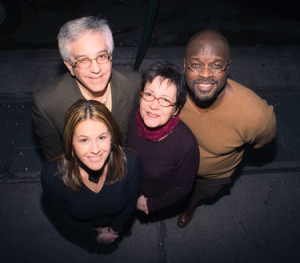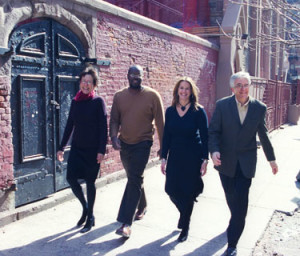“The history means a lot to me–it really does,” says a California woman on the edge of tears. One of public television’s “history detectives” has just told her that the box of John Brown’s letters passed down through generations of her family “connects you to the moments when we talk about standing up for people’s rights.” While the soundtrack swells with Pete Seeger’s “Battle Hymn of the Republic,” the intrepid researcher and the letters’ owner share a hug. Fade to black.
Television–particularly since the saturation of shock talk shows and reality TV–has so cheapened emotion that it’s hard to tell when we’re seeing the real thing. This moment feels quite genuine. The fact that it was triggered by musty letters and the discovery of their chain of ownership reminds us just how touching the past can be.
If it does nothing else, the new PBS series History Detectivesproves over and over what Roy Rosenzweig and David Thelen express so well in their surveys of Americans’ attitudes toward history: many Americans connect most directly to the past through their own family stories. If you and I met at a cocktail party, I might tell you about my early-nineteenth-century ancestor, a Norwegian seaman, who was one of only a few to make it onto a lifeboat when his whaling ship sank in the Arctic Sea. As the survivors floated in the chilly waters waiting for rescue–the story goes–it became clear that the sailors who would make it home would be those who were willing to eat the captain. What we know for sure is that my ancestor went on to live a long life and prospered as a caterer.
But do I have the guts to track the story down and verify it? No, I’d rather be able to tell it to strangers at dinner parties (maybe after dinner is better) and say with honest ignorance that it really happened.
Fortunately for History Detectives, plenty of other people arewilling to put their family legends to the test of empirical research. The result is ten one-hour episodes during which a mod squad of highly energetic researchers investigates stories, events, artifacts, and myths that have been passed down in the families of ordinary Americans for generations. In the blitz of an expensive advertising campaign waged by PBS in advance of the series’ premiere last July, History Detectives was promoted as somehow both glossy and homey, both sexy and cozy: History Detectives, the marketers promised, is “Antiques Roadshow meets CSI.”
Whether PBS has realized its market-share goal is uncertain, but the series is undoubtedly worthwhile. Not only is History Detectives a refreshing change from the generally predictable PBS history line-up, but it’s a far more useful way of learning about history than most documentary offerings on public TV or the cable channels. I say about history because what makes History Detectives so interesting and valuable is not so much the history a viewer can learn (though some of it is fascinating). The value of this TV series is what it conveys about the excitement, frustration, high emotion, and sheer fun that can be had by anyone who chooses to follow a trail into the past. So while the show is so history lite that it occasionally threatens to blow away altogether, it also promotes the idea of public history far better than anything I’ve seen on television. By repeatedly showing the rich and surprising treasures to be found in public libraries, local historical societies, museums, and newspaper archives, History Detectives proves beyond a doubt that indeed everyone can be his or her own historian.
What the program lacks is, not surprisingly, much discussion of the ambiguities, contradictions, and complexities that professional historians know so well. But after all, this is TV. So when one of the researchers declares to a woman who’s brought in a particularly thorny case, “This is the moment–I have all the answers!” the inescapable fact that television demands black and white solutions is brought home all too vividly. This is not to say, however, that the research is always made to look easy. On the contrary, History Detectives does an admirable job of portraying the dead ends, overlooked details, and inevitable disappointments encountered in any investigation.
The formula for the show sounds almost goofy. Take four telegenic characters and show them striding down a street music-video style while the Elvis Costello song “Watching the Detectives” booms behind them, then set them loose on a mystery from American history that holds an important outcome for somebody (not necessarily everybody). The four sleuths are Wes Cowan, an auctioneer and appraiser (also an anthropologist); Gwen Wright, a professor of architecture; Tukufu Zuberi, a sociologist; and Elyse Luray, an appraiser with training in art history.
Wait a minute! What’s wrong with this picture? There’s not a single historian among the “history detectives”! The producers must have their reasons. Two of the gang, Cowan and Luray, also appear on the PBS series Antiques Roadshow so they were known quantities. The other two are new to the genre. Of the four, it’s Zuberi, a sociologist at the University of Pennsylvania, who appears to have the most typically academic background. It’s also Zuberi who is often the most analytical of the team. He searches for the meanings behind the discoveries, and is articulate and passionate in relating to family members the larger context of their story or artifact. The mysteries the quartet sets out to solve run the gamut, but for the most part they involve a myth or artifact. Did the family-owned San Antonio printing company really print the paper money that helped finance the Mexican Revolution, as the current owner has heard rumored? Is the salty old New Englander right when he says that the whaling ship his grandfather skippered out of New Bedford sheltered escaped slaves among its crew? Was the pearl-handled dirk handed down in a Louisiana family really bestowed by Napoleon to commend an ancestor’s battlefield bravery? The stories are not always domestic. One uncovers how a ball field in Atlantic City came to be named for a Negro League player when the city was still segregated. In another, a Texas railroad buff is convinced that a little wooden station house tucked deep in the Dallas rail yards was actually the settlement’s first rail station–the kernel of the system that would eventually make Dallas a thriving city.
But here’s the problem the producers of History Detectives are up against. The key to the success of Antiques Roadshow is the gee-whiz moment at the end of each segment when the expert/appraiser lets the owner know just how much that dented up cuspidor or the ugly watercolor bought at a yard sale will fetch. “Wow! I had no idea it was worth that much!” says the shocked and delighted owner, visions of a new motorboat dancing in his head.
Information from the past just doesn’t arouse the same cupidity. So how can the producers make viewers stick out the investigative part of the story and stay around for the pay-off of truth? Someone has to have something big at stake, and the producers sometimes work too hard to ratchet up the suspense. The Dallas station house is a case in point; not only is the outcome undramatic either way, but the process of digging out the facts feels stretched beyond credibility in order to fill the segment’s seventeen screen minutes. Tracking down the location and a description of Dallas’s first station surely can’t be that difficult.
But many of the segments do succeed in being both dramatic and enlightening–sometimes even moving. A particularly strong story unfolds when a Chinese-American woman asks the team to determine whether any of the hundreds of poems carved into the walls of California’s Angel Island barracks by incarcerated Chinese immigrants in the early 1900s might have been written by one of her ancestors. The question seems impossible to answer, particularly because, like many immigrant families, the current generations have virtually no information about their forebears. In the end, a definite answer eludes the researchers, but the two history detectives who take it on get far closer than seems conceivable. Along the way we learn a great deal about Chinese immigration and the miserable conditions under which thousands of newcomers had to live before being admitted or turned away. When the detectives unearth a photo of the woman’s great-grandfather from the immigration records, along with the information that he died on the island while appealing his denial to enter the U.S., it seems perfectly natural to see the family members moved to tears.
In an effort to provide some deeper history without bogging down the pace, the producers also incorporate brief informational segments to generalize the specific stories. With MTV editing, zooming graphics, sound effects, and subject-appropriate pop songs, one of the hosts will present a two-or-three minute essay on the history of paper money, or free African-Americans in the antebellum South, or the crucial role of railroads in the development of Texas. The wider context is welcome indeed, and serves the important purpose of pointing out to viewers how it’s so often the small stories that are the individual threads of our collective larger history. At the same time–and I never thought I’d say this about a PBS show–the interstitial segments are just too rock-and-roll!
Does PBS have a hit on its hands? So far, according to Oregon Public Broadcasting (the co-producer of the series with Britain’s Lion Television), the ratings are getting better with each episode. The series’ well-trafficked Website is full of how-to tips for amateur researchers, as well as background on the stories. The Web has also proved a boon in soliciting story ideas from the public, and the producers say they’ve now got a far richer mine of material to choose from than they had for the first go-around. PBS has commissioned ten new episodes for next season despite the fact that the show hasn’t yet secured a corporate sponsor (as of August 2003).
There is some danger that History Detectives could prove so successful that PBS would repeat the formula endlessly–as its cable and network cousins would–at the cost of its serious history programs. I doubt it, but it’s worth pondering. Now, while I have your attention, did I ever tell you about my great-great-grandmother the mountain climber?
Note: History Detectives is a co-production between Lion Television and Oregon Public Broadcasting. The series producer is Tony Tackaberry; the OPB executive producer is David Davis. For broadcast times see local PBS schedules.
This article originally appeared in issue 4.1 (October, 2003).
Eric Stange is a filmmaker based in Arlington, Massachusetts. Most recently, he directed “Murder At Harvard,” a historical whodunit with Simon Schama broadcast on PBS’s American Experience. His current project is a four-hour public TV series about the French and Indian War. In 2002-03 he was a fellow at the Charles Warren Center for Studies in American History, Harvard University.





















